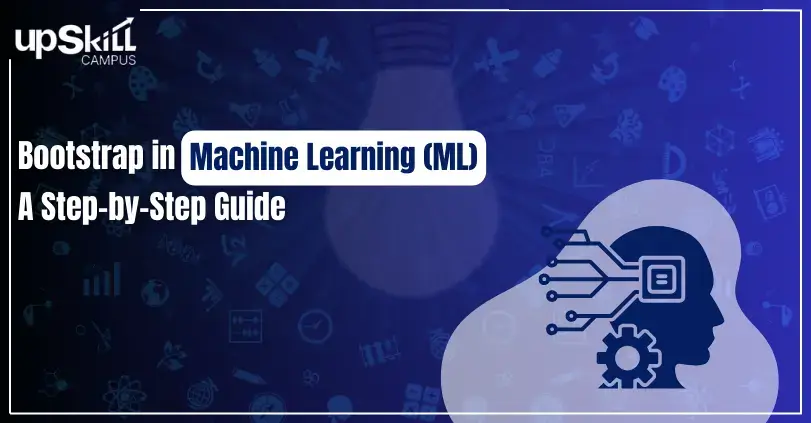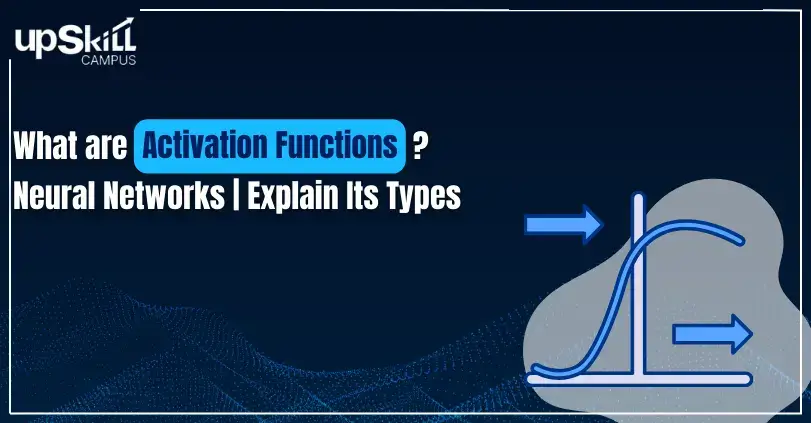Explain the Role of Natural Language Processing in Machine Learning

By Upskill Campus
Published Date: 9th September, 2024 Uploaded By: Priyanka Yadav
Artificial Intelligence is a requirement of today's world. Do you know what the ‘intelligent’ agent in Artificial Intelligence is? That is Natural Language Processing in Machine Learning. NLP is a part of artificial intelligence. It deals with computers and human language. NLP helps machines understand and interact with human language.. With the advancement in NPL in machine learning, AI systems can better understand and interact with the world. This process makes it more user-friendly and flexible. So, in this article, we will learn what natural language processing is in machine learning.
What is Natural Language Processing in Machine Learning?
Natural Language Processing (NLP) in ML is a part of artificial intelligence that helps computers understand and use human language. It teaches machines to process language as humans do. However, NLP lets computers do things like translate languages, understand feelings in text, summarize articles, and recognize spoken words. To do these things, NLP uses machine learning algorithms that are trained on lots of text and speech data.
Because human language is so large and ambiguous, the NLP algorithm in Machine Learning is very complicated. The subtitles, context, and meaning that define a language are abundant and can differ greatly between civilizations, dialects, and even individuals. For machines to process language efficiently, they need to overcome obstacles such as
- Syntax and Grammar Understanding the structure of sentences.
- Semantics Grasping the meaning behind words and sentences.
- Pragmatics Interpreting language in context, such as identifying sarcasm or idioms.
- Ambiguity Resolving words or sentences with multiple meanings.
Natural language processing in machine learning has made it easier for users to interact with electronics. However, complex processing happens behind the scenes to make this possible. Machine learning plays a crucial role in this language processing. Let’s understand the crucial roles of NLP in Machine learning.
The Role of Natural Language Processing in Machine Learning
Natural Language Processing (NLP) is used in machine learning to help machines understand human language better. This involves breaking down words, examining sentence structure, and understanding meaning. Moreover, machine learning is a valuable tool for each of these steps, making language comprehension smoother. It's like teaching machines to understand and respond to how we speak and write. Let's explore how natural language processing in ML work together.
1. Morphological Analysis
Machines initially receive data as binary code. ASCII systems convert this code into characters. When a sentence is input, the machine sees a string of characters. Tokenization, the first step in morphological analysis, involves breaking down these characters into words and sentences. Various machine learning and deep learning algorithms, such as Support Vector Machines and Recurrent Neural Networks, are used for tokenization.
Tokenization results in a collection of words and sentences. Many words have affixes, which can be challenging. Stemming or lemmatization removes these affixes. Algorithms like random forests and decision trees are effective in stemming
2. Syntactic Analysis
Next, we must ensure that sentences follow correct grammar. To do this, we tag words with their parts of speech (like nouns, and verbs). This helps check grammar. Machine learning and deep learning models, like random forests and RNNs, have been successful in this task. Also, syntactic parsers, which analyze sentence structure, have been implemented using algorithms like K-nearest neighbors.
3. Semantic Analysis
At this stage, dictionaries are used to find the meanings of words. But, a word can have different meanings based on the sentence. For example, a "bank" could mean a financial institution, a riverbank, or a blood bank. This is called ambiguity. To clarify the meaning, we need to use Word Sense Disambiguation.
Word sense disambiguation is a classic NLP problem. Researchers have used various machine learning techniques to tackle it. Random forests, gradient boosting, and decision trees have been successful. In recent years, deep NLP Machine Learning models have produced impressive results. RNNs, LSTMs, GRUs, and CNNs are examples of these deep learning models. They have been particularly effective in resolving word sense ambiguities.
4. Discourse Analysis
Semantic analysis might not always capture the full meaning of a sentence, especially when pronouns or references point to things outside the current context. This is where discourse analysis becomes important. It helps machines understand these references. Machine learning and deep learning models have been successfully used to handle this challenge
5. Pragmatic Analysis
Researchers have explored various machine learning and deep learning algorithms for pragmatic analysis. However, detecting sarcasm and understanding implied meanings remains challenging. Despite this, ongoing research is pushing the boundaries of what's possible in this field. This is why NLP machine learning algorithms are also required in pragmatic analysis.
Often, sentences have deeper meanings than their literal words suggest. Sarcasm or implied meanings can be difficult for machines to understand. Pragmatic analysis focuses on capturing these nuances. Machines must go beyond basic semantic analysis to do this. Sarcasm detection is a classic example of pragmatic analysis. It's a challenging area that has interested researchers for years.
Essential NLP Machine Learning Examples
NLP and machine learning have combined to create many useful applications. Some important ones include
1. Voice Assistants
Virtual assistants like Siri, Alexa, and Google Assistant use Natural Language Processing in Machine Learning to understand spoken commands. They use speech recognition to convert spoken words into text, NLU to understand the meaning of the text, and NLG to generate appropriate responses. NLP techniques machine learning allow for smooth communication between humans and machines.
2. Sentiment Analysis
Sentiment analysis helps businesses understand public opinion. It's used in marketing and customer service. By analyzing social media posts, reviews, and other content, businesses can classify text as positive, negative, or neutral. Moreover, this helps them gauge public opinion about products, services, or brands.
3. Machine Translation
Machine translation tools like Google Translate use NLP and machine learning to translate text between languages. These tools are trained on massive amounts of text data in various languages. However, by using deep learning, they can understand context and provide accurate translations.
4. Chatbots
Chatbots are becoming increasingly important for automating customer service. NLP-powered chatbots use machine learning to understand customer questions and provide helpful answers. Consequently, businesses can offer real-time assistance to their customers.
5. Text Summarization
Natural Language Processing (NLP) algorithms can automatically summarize large documents. This makes it easier to quickly grasp key information. Additionally, Machine learning models identify important points and can rephrase text to create concise summaries.
Conclusion
Natural Language Processing in Machine Learning helps understand human language. Therefore, machines break down text, analyze grammar, and understand meaning. Moreover, machine learning algorithms assist. As a result, NLP has many applications, such as translation and chatbots. Consequently, NLP will continue to advance, leading to more sophisticated uses in various fields.
Frequently Asked Questions
Q1. Is NLP part of AI or ML?
Ans. Natural Language Processing (NLP) is a subfield of Artificial Intelligence (AI) that often uses Machine Learning (ML) techniques. NLP is a distinct area within AI, it heavily leverages machine learning to achieve its goals.
Q2. Does NLP use neural networks?
Ans. Yes, Neural networks are crucial for NLP. They handle sequential data well and learn complex patterns. RNNs, LSTMs, and Transformers are popular types. Neural networks help machines understand and generate human language effectively.
About the Author
UpskillCampus provides career assistance facilities not only with their courses but with their applications from Salary builder to Career assistance, they also help School students with what an individual needs to opt for a better career.





Leave a comment